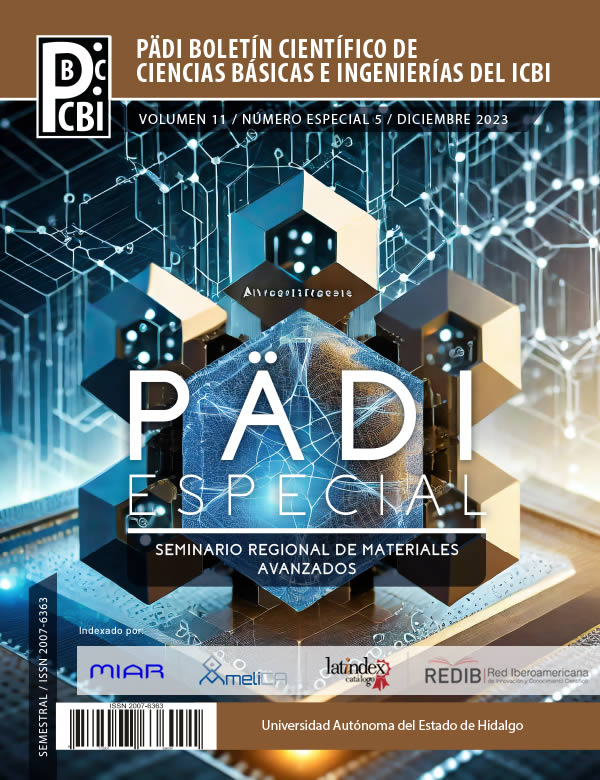Optimizing Flexural Strength in Polyester/Luffa Fiber Composites via Gamma Radiation Treatment
Abstract
This investigation aims to assess the flexural properties of polyester resin/luffa fibers composites. Three different kinds of specimens were tested; the first one consisted of polyester resin exposed to gamma rays at doses ranging from 0 to 500 kGy. The second were composites produced with polyester resin and 1-5 wt% luffa fibers, and the last one consisted of polyester resin and 5% luffa fibers composites exposed to gamma rays (100, 200, 400 and 500 kGy doses). The results show a maximum increase of 27% in flexural modulus when polyester resin was irradiated at a 500 kGy dose. However, there was a decrease of 72% in deformation when 5% of luffa fibers were added. This indicates an increase in rigidity in all three types of specimens but an adverse effect on the strain at rupture. Therefore, the combination of adding luffa fibers and exposing the composites to gamma rays appears to be a suitable method for improving rigidity, albeit with some limitations in deformation.
Downloads
References
Abdel-Hakim, A., Awad, E. H., El-Nemr, K. F., & El-Basheer, T. M. (2021). Impact of gamma radiation and multi-walled carbon nanotubes on the mechanical and acoustical properties of reinforced sisal fiber/polyester resin composites. Radiation Physics and Chemistry, 189, 109768.
https://doi.org/10.1016/j.radphyschem.2021.109768
Alcañiz-Monge, J., Román-Martínez, M. D. C., & Lillo-Ródenas, M. Á. (2022). Chemical activation of lignocellulosic precursors and residues: what else to consider?. Molecules, 27(5), 1630.
https://doi.org/10.3390/molecules27051630
Ayma, A., (2017). Effect of Gamma radiation on the properties of jute reinforced polyester matrix composites. Journal of textile science and engineering 7 (2): 1-3.
https://doi.org/10.4172/2165-8064.1000294
Bal, K., (2004). Gross morphology and absorption capacity of cell-fibers from the fibrous vascular system of Loofah (Luffa cylindrica). Textile Res. J 74: 241-247.
https://doi.org/10.1177/004051750407400310
Güven, O., Monteiro, S. N., Moura, E. A., & Drelich, J. W. (2016). Re-emerging field of lignocellulosic fiber–polymer composites and ionizing radiation technology in their formulation. Polymer Reviews, 56(4), 702-736.
https://doi.org/10.1080/15583724.2016.1176037
Haghdan, S., & Smith, G. D. (2015). Natural fiber reinforced polyester composites: A literature review. Journal of Reinforced Plastics and Composites, 34(14), 1179-1190.
https://doi.org/10.1177/0731684415588938
Hasan, A., Rabbi, M. S., & Billah, M. M. (2022). Making the lignocellulosic fibers chemically compatible for composite: A comprehensive review. Cleaner Materials, 4, 100078.
https://doi.org/10.1016/j.clema.2022.100078
Hossain, M. T., Hossain, M. S., Kabir, M. S., Ahmed, S., Khan, R. A., & Chowdhury, A. S. (2023). Improvement of mechanical properties of jute-nano cellulose-reinforced unsaturated polyester resin-based composite: Effects of gamma radiation. Hybrid Advances, 3, 100068.
https://doi.org/10.1016/j.hybadv.2023.100068
Joshi, S. V., Drzal, L. T., Mohanty, A. K., & Arora, S. (2004). Are natural fiber composites environmentally superior to glass fiber reinforced composites?. Composites Part A: Applied science and manufacturing, 35(3), 371-376.
https://doi.org/10.1016/j.compositesa.2003.09.016
Oboh I., (2009). Luffa cyllyndrica- an emerging cash crop. African journal os agricultural research 4(8): 684-688.
ISBN: 1991-637X
Qazvini, N. T., & Mohammadi, N. (2005). Dynamic mechanical analysis of segmental relaxation in unsaturated polyester resin networks: Effect of styrene content. Polymer, 46(21), 9088-9096.
https://doi.org/10.1016/j.polymer.2005.06.118
Saha, P., Chowdhury, S., Roy, D., Adhikari, B., Kim, J. K., & Thomas, S. (2016). A brief review on the chemical modifications of lignocellulosic fibers for durable engineering composites. Polymer Bulletin, 73, 587-620.
doi:10.1007/s00289-015-1489-y
Shen J., 2012. Mechanical properties of Luffa sponge. J. Mech. Behav. Biomed. Mater 15: 141–152.
https://doi.org/10.1016/j.jmbbm.2012.07.004
Siqueira G:, (2010). Luffa Cylindrica as a lignocellulosic source of fiber, microfibrillated cellulose, and cellulose nanocrystals. BioResources 5 (2): 727-740.
ISBN:1930-2126
Stamatakis, G., Knuutinen, U., Laitinen, K., & Spyros, A. (2010). Analysis and aging of unsaturated polyester resins in contemporary art installations by NMR spectroscopy. Analytical and bioanalytical chemistry, 398, 3203-3214.
doi:10.1007/s00216-010-4233-3
Zhou, Y., Fan, M., Chen, L., & Zhuang, J. (2015). Lignocellulosic fibre mediated rubber composites: An overview. Composites Part B: Engineering, 76, 180-191.
Copyright (c) 2023 Héctor Omar Camacho-Gutiérrez, Gonzalo Martínez-Barrera, Luis Edmundo Lugo-Uribe

This work is licensed under a Creative Commons Attribution-NonCommercial-NoDerivatives 4.0 International License.













